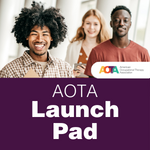Proposed Payment Models Recognize and Include the Services of Occupational Therapy Practitioners
The Physician-Focused Payment Model Technical Advisory Committee (PTAC) recently put out a notice regarding letters of interest (LOIs) that were submitted by stakeholders for two alternative payment models (APMs). AOTA is extremely pleased to see both specifically mention the inclusion or possible inclusion of occupational therapy services within these APMs. The two models are the Community Aging in Place—Advancing Better Living for Elders program (CAPABLE) submitted by Johns Hopkins School of Nursing and Stanford Clinical Excellence Research Center, and the Patient-Centered Headache Care Payment (PCHCP) model submitted by the American Academy of Neurology. A non-binding LOI must be submitted to PTAC at least 30 days prior to the submission of a full proposal for any model. The Committee will discuss proposals, deliberate, and make recommendations in public meetings held in Washington, DC. Despite still being in the early stages of the process, AOTA would like to emphasize to members that even though on its face this is seemingly a small-scale victory, the recognition in potential Medicare alternative payment models is a large achievement for the future of payment of occupational therapy services and could create a direct opportunity for occupational therapists to be involved in an Advanced Alternative Payment Model within the purview of the Medicare Quality Payment Program.
Since the PTAC began accepting LOIs and proposals from stakeholders, AOTA has only reviewed and commented on one other model proposal that specifically included occupational therapy services. We believe these two upcoming proposals will more than adequately represent the distinct value of occupational therapy services in a manner that has not been done before in front of the PTAC. Under traditional Medicare there are barriers for occupational therapy practitioners to get reimbursed for services well within the scope of practice that are deemed preventative in nature, or not “medically necessary” by the traditional Medicare program. By addressing this issue through proposals that take a vastly different approach to the “medical model” and fee-for-service payment methodology, these APMs have the potential to finally move the needle in a new direction and provide the momentum needed to promote real health care innovation.
By way of brief background, the Medicare Access and CHIP Reauthorization Act of 2015 (MACRA) creates new ways for the Medicare program at the Centers for Medicare & Medicaid Services (CMS) to pay physicians for the care they provide to Medicare beneficiaries. MACRA also creates incentives for physicians to participate in Alternative Payment Models, including the development of physician-focused payment models. Ten criteria were outlined in the MACRA final rule with a comment period that was made public on October 14, 2016, and published in the Federal Register on November 4, 2016. PTAC intends to evaluate the extent to which proposed models meet the Secretary’s criteria and to make recommendations regarding proposed models, including limited-scale testing, implementation, implementation with a high priority, or not recommend.
AOTA plans to comment once the formal proposals are publicly released and encourages members to engage in this important process. More information about the PTAC can be found on its webpage. https://aspe.hhs.gov/ptac-physician-focused-payment-model-technical-advisory-committee
